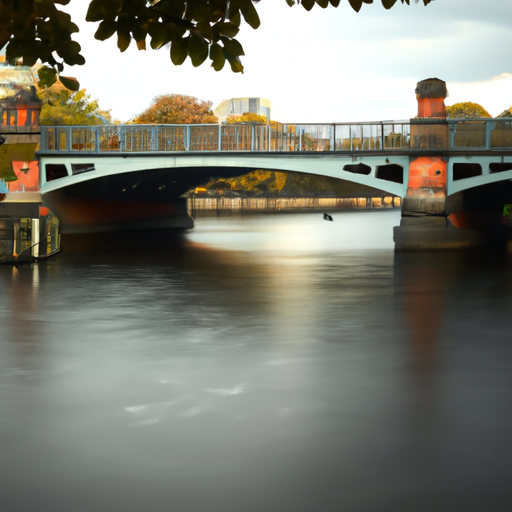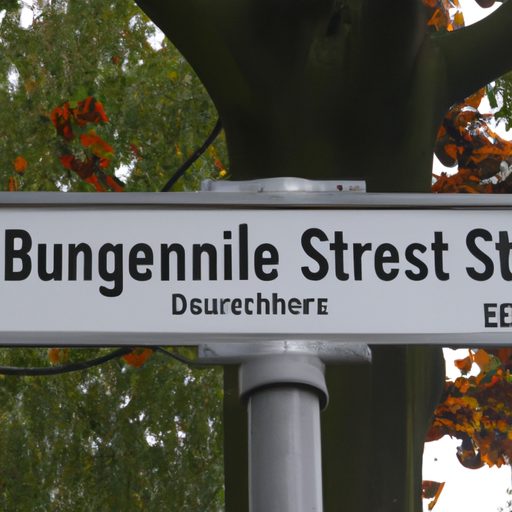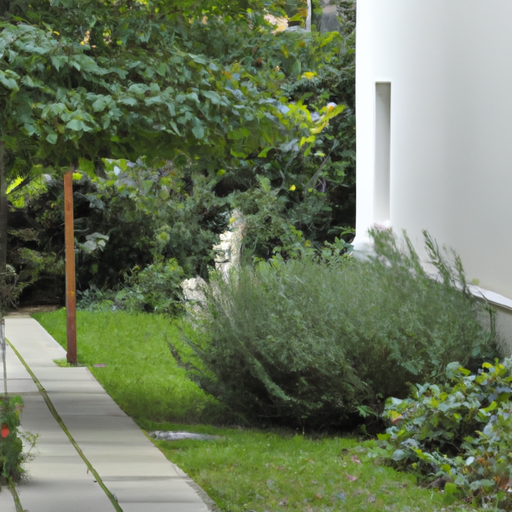The Hidden History of Berlin’s Iconic Bridges
Ah, bridges, those majestic, gravity-defying structures that connect two worlds and take us on a journey across rivers, valleys, and even time. Now, if you thought bridges were just for cars and pedestrians, think again, my dear friend. Berlin, the city of artists, dreamers, and wild, untamed creativity, is home to some of the most iconic bridges in the world, each with its own fascinating history, unique architectural style, and, of course, a generous helping of urban legends and spicy anecdotes. So, grab your coffee, put on your favorite black turtleneck sweater, and let’s embark on a journey across the hidden history of Berlin’s iconic bridges.
Our first stop is the Oberbaum Bridge, a symbol of unity between the former East and West Berlin. This striking red brick structure, with its pointed gothic towers and intricate mosaics, looks like it was plucked straight out of a medieval fairytale. But did you know that the Oberbaum Bridge was once a battleground for tomato fights? Oh yes, every year, former East and West Berliners would gather on this historic bridge to pelt each other with tomatoes in a light-hearted re-enactment of the Cold War. Talk about a saucy celebration of unity!
Next up, we have the Glienicke Bridge, also known as the “Bridge of Spies.” This unassuming steel structure may seem like just another crossing point over the Havel River, but it’s steeped in intrigue and espionage. During the Cold War, the bridge was the site of numerous spy exchanges between the East and the West, with captured agents from both sides being traded like collectible stamps. It’s said that even today, if you listen closely, you can hear the faint whispers of secret agents plotting their next undercover operation. Or maybe that’s just the wind…who knows?
As we make our way further into the heart of Berlin, we come across the Weidendammer Bridge. With its elegant cast-iron arches and charming street lamps, this bridge would be the perfect setting for a romantic rendezvous or a late-night philosophical debate. But let’s not get too carried away by our poetic musings, for the Weidendammer Bridge also has a dark side. Legend has it that the bridge is haunted by the ghost of a 19th-century woman who, heartbroken and betrayed by her lover, threw herself into the icy waters of the Spree River. Some say that on moonlit nights, you can still see her wandering the bridge, searching for her lost love. So, if you find yourself crossing the Weidendammer Bridge after a night of heavy drinking, beware, for you might just stumble upon a ghostly encounter.
Now, we simply cannot talk about Berlin’s bridges without mentioning the jaw-dropping Schönhauser Allee Bridge. With its imposing brick arches and towering steel supports, this bridge is a testament to the power of industrial architecture. But did you know that the original Schönhauser Allee Bridge was actually made of wood? That’s right, back in the day, Berliners liked to keep things natural and sustainable. However, as times changed and the city grew, the wooden bridge was replaced with the steel behemoth we see today. It’s said that the ghost of the original wooden bridge still lingers nearby, forever mourning the loss of its simpler, greener days.
We mustn’t forget the Molecule Man Bridge, which isn’t actually a bridge at all, but rather a stunning sculpture that graces the meeting point of the Spree and Dahme rivers. Created by American artist Jonathan Borofsky, this colossal aluminum structure depicts three enormous figures, each with their bodies pierced by countless holes, symbolizing the interconnectedness of all living beings. Now, some may argue that including a sculpture in a list of iconic bridges is a bit of a stretch, but we Berliners are nothing if not creative and unconventional. So, let’s raise a glass to the Molecule Man Bridge, the non-bridge bridge that makes us question the very nature of bridges themselves.
Finally, we arrive at the Moabit Bridge, a humble, unassuming structure that belies its rich and storied past. You see, this modest bridge was once the site of a famous duel between two rival poets, each vying for the affection of the same beautiful muse. The duel was fierce, with both poets armed with nothing but their wit and razor-sharp quills. In the end, it’s said that the muse chose neither poet, for she had fallen in love with the bridge itself, enchanted by its quiet charm and steadfast resilience.
And there you have it, a whirlwind tour of the hidden history of Berlin’s iconic bridges. But wait, there’s more! Berlin is a city of countless bridges, each with its own unique story, and we’ve only just begun to scratch the surface. So, fear not, intrepid bridge enthusiasts, for there are many more tales to be told and secrets to be uncovered in the ever-evolving, always surprising city of Berlin.
Helpful Q&A:
Q: How did Berlin’s iconic bridges come to be?
A: Berlin’s iconic bridges have a long and fascinating history that dates back to the early development of the city itself. As Berlin grew, the need for efficient transportation and connection between different districts became essential, leading to the construction of bridges across the Spree and Havel rivers. Each bridge has its own unique story and architectural design, reflecting the history and values of the city at the time of its construction. For example, the Oberbaum Bridge, built in 1895, was initially a wooden structure that was later replaced by a grander brick and stone design to showcase Prussian architectural prowess. The Glienicke Bridge, also known as the Bridge of Spies, has a more recent history, as it was used for secret prisoner exchanges between East and West Germany during the Cold War. These bridges not only served practical purposes but also became symbols of Berlin’s resilience and innovation throughout its tumultuous history.
Q: What makes Berlin’s bridges so iconic in terms of architecture?
A: The architecture of Berlin’s bridges is as diverse as the city itself. Each bridge displays unique designs and engineering techniques that reflect the era in which it was built. Some of the most famous examples are the Oberbaum Bridge, which combines Gothic and Art Nouveau elements, and the Glienicke Bridge, which showcases a simple yet elegant Neoclassical design. Many of the bridges also incorporate artistic elements, such as sculptures and mosaics, that add an extra layer of depth and symbolism to their design. Additionally, the bridges often serve as a canvas for street artists, who add their own touch to the structures and contribute to the ever-evolving urban landscape of Berlin.
Q: Can you share a funny anecdote related to Berlin’s bridges?
A: Absolutely! One of the most amusing anecdotes related to Berlin’s bridges involves the Molecule Man, a monumental aluminum sculpture created by American artist Jonathan Borofsky. The sculpture, which consists of three gigantic humanoid figures coming together at their center, is located in the middle of the Spree River, right next to the Elsen Bridge. The funny part is that, during the construction of the sculpture, the artist accidentally dropped one of the Molecule Man’s “heads” into the river. The head was eventually retrieved, but for a short period, Berliners were left wondering if the Molecule Man was intended to have a mysterious underwater companion!
Q: How did the iconic bridges of Berlin contribute to the city’s division during the Cold War?
A: During the Cold War and the division of Berlin, the city’s bridges played a significant role in both physically and symbolically separating East and West Germany. Some bridges, like the Glienicke Bridge, became heavily guarded checkpoints, where only authorized personnel were allowed to cross between the two sides. Others, like the Oberbaum Bridge, were completely closed off, with high walls and barbed wire preventing any unauthorized crossings. This physical separation of the city’s districts was a constant reminder of the political and ideological divide that existed in Berlin at the time. However, after the fall of the Berlin Wall in 1989, the bridges were reopened and once again served as vital connectors between the reunited city’s diverse neighborhoods.
Q: What role do Berlin’s iconic bridges play in modern-day Berlin?
A: Today, Berlin’s iconic bridges serve as vital transportation links, connecting various neighborhoods and districts within the city. They also play a significant cultural role, hosting various events such as open-air markets, art installations, and even concerts. Many of the bridges, like the Oberbaum Bridge, have become popular tourist attractions, drawing visitors who are interested in learning about the city’s history and admiring its distinctive architecture. Additionally, the bridges continue to serve as a canvas for street artists, who contribute to Berlin’s vibrant and ever-changing urban landscape. Overall, Berlin’s iconic bridges are not only functional structures, but also important symbols of the city’s past, present, and future.



“Who knew Berlin’s bridges had more drama than a soap opera? Can’t wait for the next episode of ‘Bridges of Berlin County’! 😂🌉 #BridgeDrama #BerlinHistory”